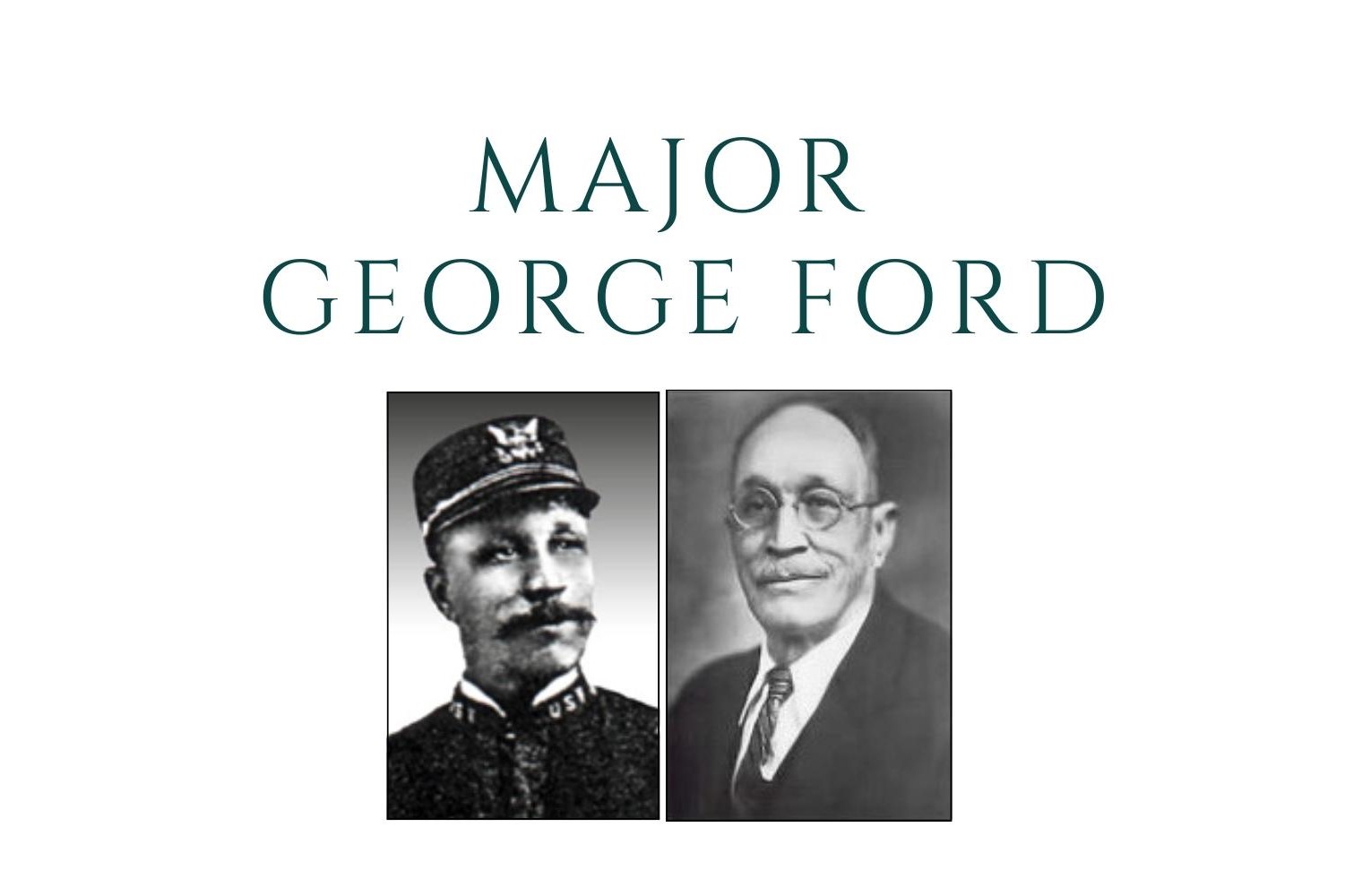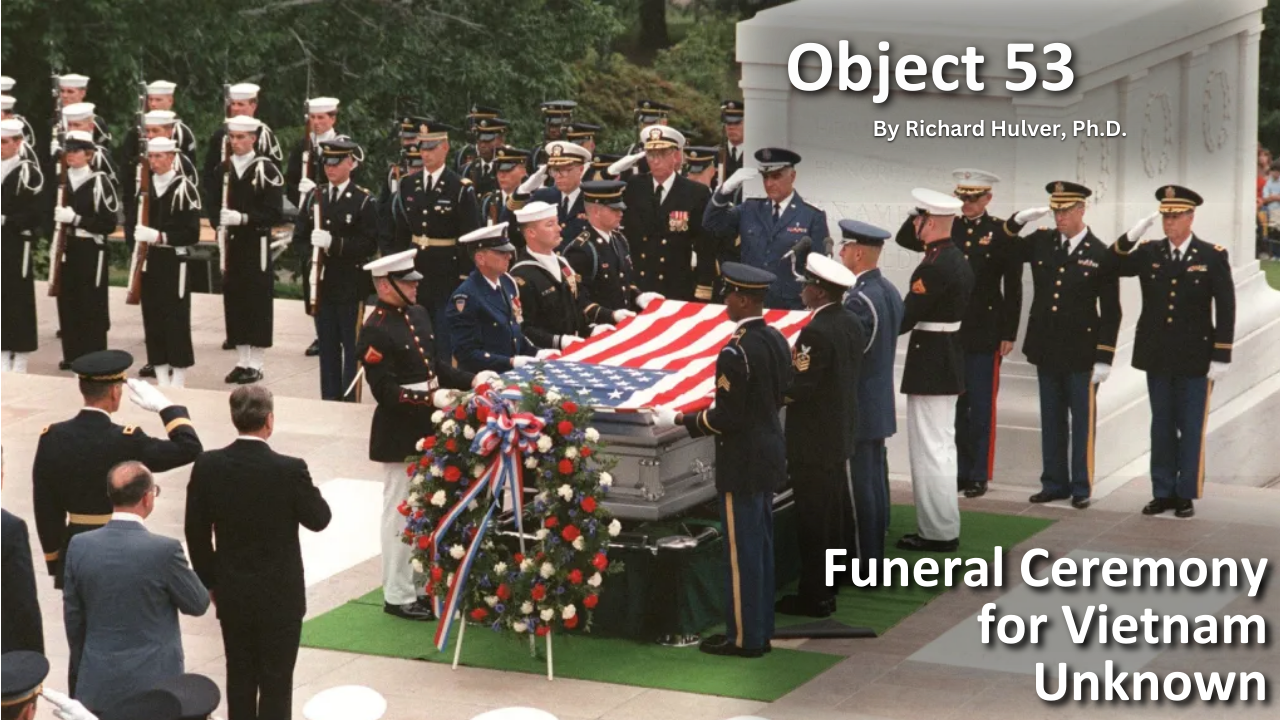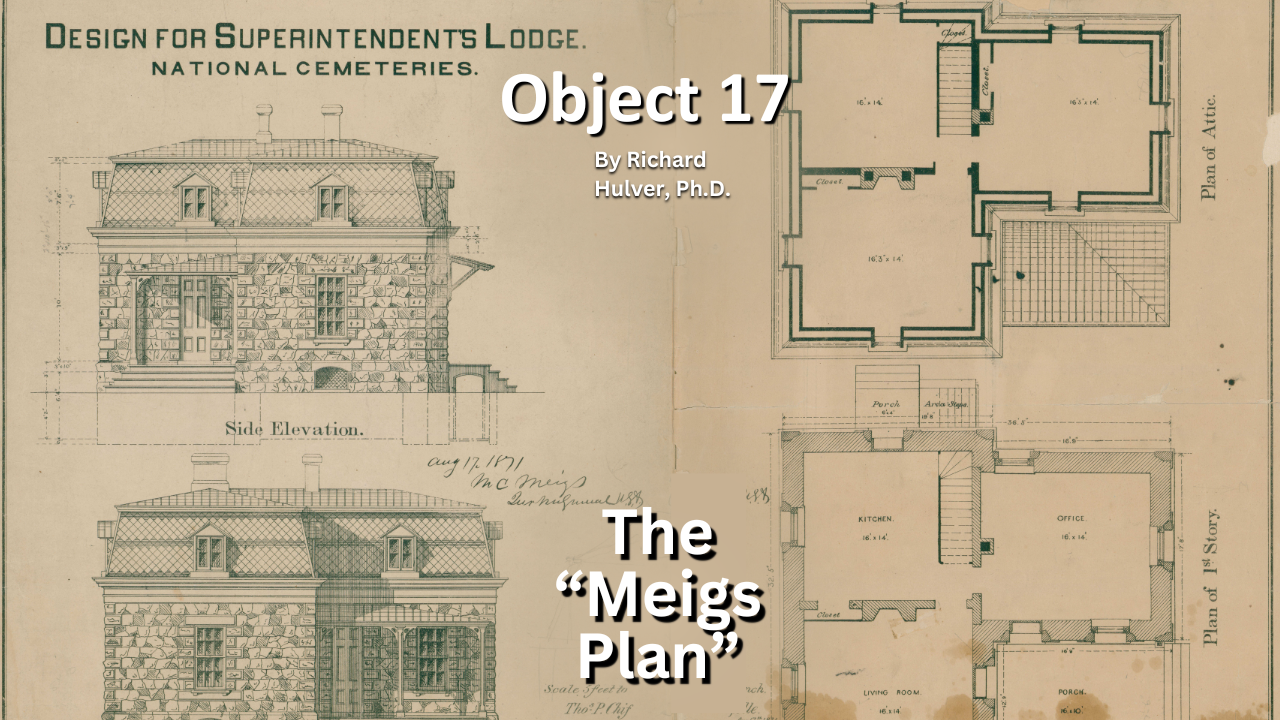
Featured Stories
George Ford – Veteran and National Cemetery Superintendent
George Ford was a Veteran of the famed "Buffalo soldiers" after the Civil War. A U.S. law gave preference to employ Veterans to oversee the growing cemetery system for Union dead. So in 1878, Ford became one of the first Black Veteran superintendents of a national cemetery.

History of VA in 100 Objects
Object 55: Dorothea Dix’s Monument to Union Soldiers
On May 12, 1868, Dorothea L. Dix at last had the satisfaction of transferring to the Army ownership of the monument she helped finance and shepherd to completion. Dedicated to “Union Soldiers who perished in the War of the Rebellion,” Dorothea Dix's monument was a 65-foot-tall granite obelisk erected in Hampton National Cemetery in Virginia near the large Civil War hospital at Fort Monroe.

History of VA in 100 Objects
Object 53: Funeral Ceremony For Vietnam Unknown
After a 26 year journey from the Vietnam Unknown memorial to St. Louis, Missouri, a casket containing the remains of 1st Lt. Michael Blassie was interred in Jefferson Barracks National Cemetery in his hometown on July 11, 1998.

History of VA in 100 Objects
Object 48: Floor Plan of VA’s Historic Indoor Columbarium
In June 1941, Charles Ray Smith—aviation mechanic, Army Veteran, and past commander of the American Legion post in Gridley, California—died suddenly after a surgical procedure at age 52. His brothers and young son had the body cremated at the new columbarium at what is now Los Angeles National Cemetery.

History of VA in 100 Objects
Object 45: National Cemetery Superintendent’s Disability Certificate
The 1867 “Act to establish and to protect National Cemeteries” directed the Secretary of War to appoint a superintendent for each cemetery who was to reside in a lodge at the main entrance of the property. The superintendent’s principal duties involved greeting visitors, answering their questions, and taking care of the grounds. The Army provided superintendents with printed disability certificates affirming that the recipient had “been found a meritorious and trustworthy person, disabled in the service of the United States.”

History of VA in 100 Objects
Object 34: President Zachary Taylor’s Well-Traveled Remains
Three burial vaults, two funeral processions a thousand miles apart, and a daytrip to quash an assertion of foul play–the remains of Zachary Taylor, the only U.S. president laid to rest in a VA national cemetery, have taken an especially tortuous path to their resting place in Louisville, Kentucky.

History of VA in 100 Objects
Object 32: U.S. Colored Troops Burial Petition
Just after Christmas in 1864, African American soldiers recuperating at the United States Colored Troops (USCT) L ‘Overture General Hospital in Alexandria, Virginia, submitted a petition for the right to burial alongside their White counterparts in the city’s Soldiers' Cemetery, one of the first national cemeteries established by the U.S. government during the Civil War.

History of VA in 100 Objects
Object 17: The “Meigs Plan” Lodges
National cemeteries originated out of necessity during the American Civil War. In the summer of 1862, as casualties mounted at an alarming rate, Congress empowered President Abraham Lincoln to purchase and enclose burial plots as national cemeteries to inter the growing number of Union dead. These cemeteries were managed by superintendents, some disabled Civil War Veterans. To house them, Brig. Gen. Montgomery Meigs came up with what was later named the "Meigs Plan," the design for permanent lodges to house the superintendents.

History of VA in 100 Objects
Object 14: Fleet Admiral Chester W. Nimitz Burial Plot at Golden Gate National Cemetery
Nine individuals in U.S. history have obtained the five-star general officer rank, all but one directly on account of their World War II service. Only one of this select group, Fleet Admiral Chester W. Nimitz, is interred in a VA national cemetery.





